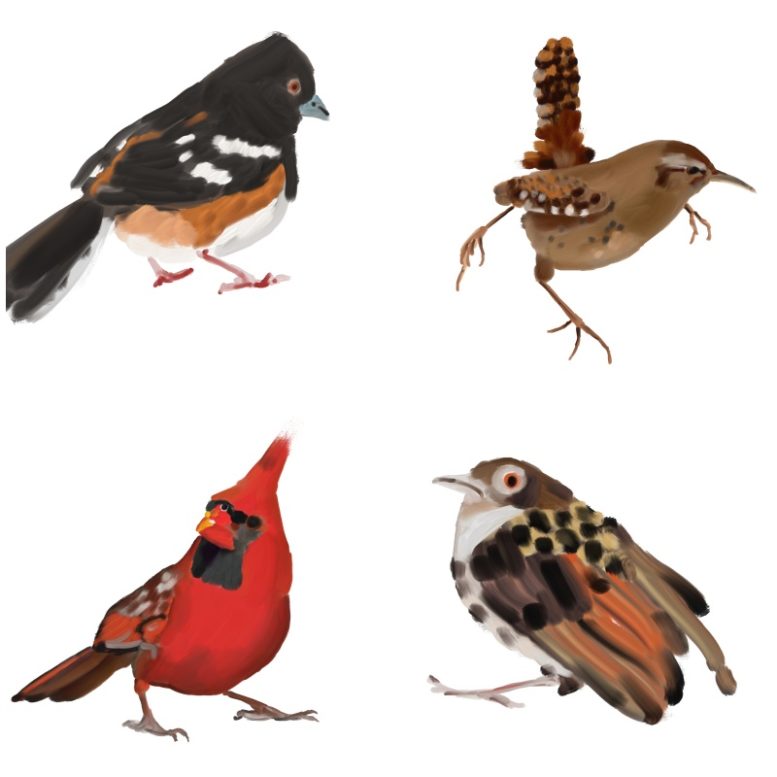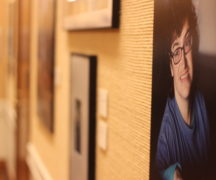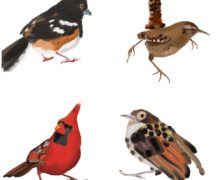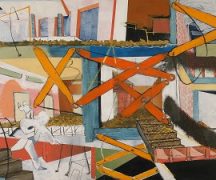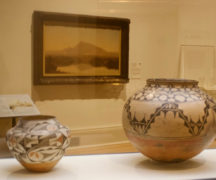By DAVID DUPONT
BG Independent News
Soon birders from around the world will flock to the shores of Lake Erie in Northwest Ohio for what’s been dubbed the Greatest Week in Birding.
At the Toledo Museum of Art, visitors can alight in the Canaday Gallery and hear the call of birds at dawn, 25 species of birds, starting with a single robin. Not all those calls are what they seem, though.
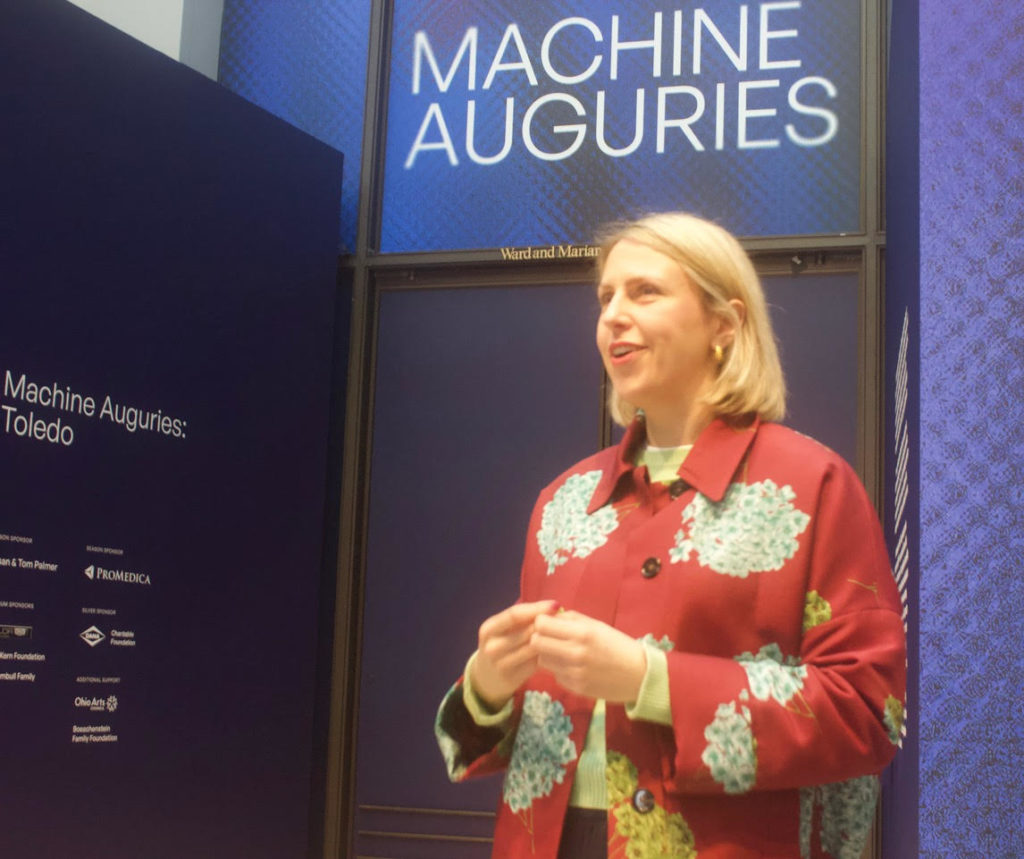
In “Machine Auguries: Toledo,” an immersive work by British artist Alexandra Daisy Ginsberg, some of those calls are field recordings, others are created using artificial intelligence technology.
The exhibit, which Ginsberg calls a composition, reflects on how human activity is encroaching on other species. It is intended to please listeners because it is familiar, and yet unsettle them because it is artificial, “a copy but an imperfect copy of nature.”
The constant low frequency sounds, the glow of artificial light, she explained, throw off the birds patterns of calling. These calls are essential for finding mates and establishing territory. But trying to adapt to changing light and especially to the sounds forces them to change how and when they sing. They use more energy. This makes is more difficult, if not impossible for birds to survive in those urban environments as in London where Ginsberg lives.
The change is gradual. “You don’t notice things as they’re disappearing,” the artist said.
Ginsberg said the lack of this dawn chorus of birds inspired the first, smaller version of “Machine Auguries” three years ago. Now the Toledo iteration takes place where a robin and its friends who rouse her in the morning. It’s “an intimate relationship,” she said.
Visually the piece is subdued – so much so the museum has not yet produced a press image. Visitors are ushered into the dimly lit gallery where they sit on benches. The lighting mimics the emerging changing light of dawn, and following the sound of crickets, he robin’s song emerges, then another, then a crackling sound – that’s the sound of artificial intelligence technology making an early attempt at learning a bird song. In the 15 minutes of simulated dawn, the visitor is treated to the sounds of calling birds. The crackling calls disappear as artificial calls with higher fidelity are mixed in. Soon the difference between the recordings of bird calls and the AI versions become indistinguishable.
All the birds represented are native to Toledo. Ginsberg asked Kimberly and Kenn Kaufman of the Black Swamp Bird Observatory to identify the most iconic species in the area. The 11 species they identified were synthesized using artificial intelligence. The earliest versions are noise. After about 125 learning cycles, she said, the AI has emulated song.
This version, she said, is more interesting than the original UK iteration because she knew those birds. In Toledo, she was forced to listen more closely to learn the avian melodies.
“This is site specific to Toledo highlighting the species as well as the ecologies of our region,” said Jessica Hong, the museum’s modern and contemporary art curator. “What this work does so beautifully is connect our immediate locale to broader context and concerns illustrating that we are part of a larger interconnected ecological fabric.”
Ginsberg’s work mixes science and technology to reflect on threats to the natural order. Ginsberg illustrated the field guide to the installation with small paintings of all 25 species. These are based on digital images created using AI. One bird has three legs.
In creating “Machine Auguries,” Ginsberg worked both with string theory physicist on the artificial intelligence. She also drew on the 100,000 field recordings at the Cornell Lab of Ornithology.
This is the first American exhibit of her work, and the first time she has been to Toledo.
“Here we’ve created much more realistic bird songs because the technology advanced so far in three years,” Ginsberg said. “What’s been most alarming and fascinating is as we’ve worked on it AI has exploded into public consciousness.”
AI’s powers are encroaching into art, education, even, she told the reporters gathered, journalism.
The future lies in how people apply their own skills to the new technology, which despite appearances is not creating anything only mimicking what already exists.
The idea of artificiality even when seeking to capture reality is embedded in the work. Even the field recordings used probably weren’t recorded locally, or even at dawn. Ginsberg has crafted it and left her fingerprints.
After experiencing “Machine Auguries” she wants viewers to “go outside and listen to the birds,” Ginsberg said. “They are communicating in their own world. We share that world, a shadow world so in way it is their work. They are separate from us. Our job is to protect them and to think about how our actions affect other species and what other species are doing for us,” she said.
Humans are self-interested human animals intent on securing our own future “but without nature we’re stuck. ”
During her stay in Toledo, she participated in banding birds. Ginsberg held a warbler, and sensed its tiny, pulsing body before releasing back into its world, ready to sing at dawn.

